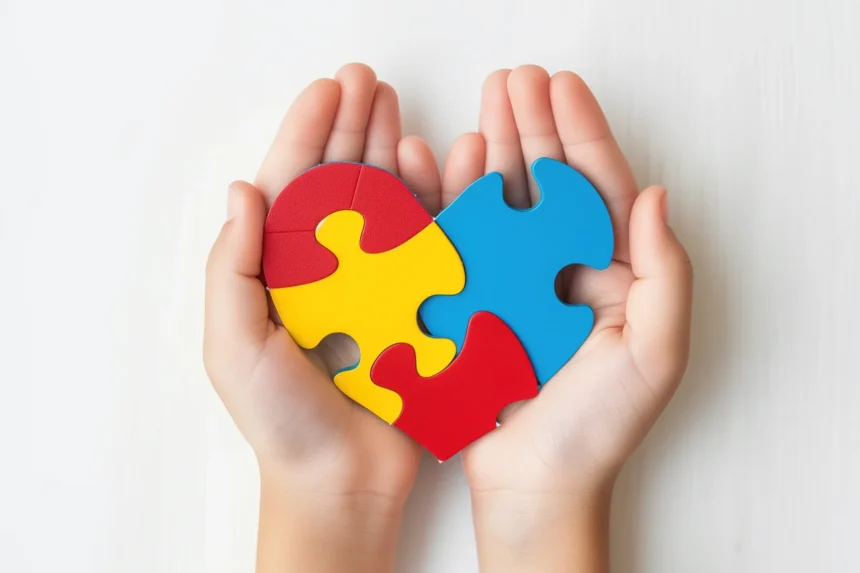While ASD affects the lives of millions of people and their families worldwide, it is a very complex and diverse disorder. Its causes, types, and effects could only be determined by the cooperation of families, researchers, and clinicians. Spark Autism promises to usher in new breakthroughs in comprehending the genetic link to autism as it is the largest genetic study about autism to this date. Spark Autism works to galvanize families around one, unified mission: helping uncover answers that can make a real difference in the lives of so many.
Why Join Spark Autism?
Understanding autism is a journey begun by asking the right questions. Spark Autism offers families the opportunity to contribute to groundbreaking research in pursuit of answers to the “whys” of autism. This is a collaborative initiative in which families can share their genetic information and give researchers the ability to investigate connections for possible causes and solutions.
What Is Spark Autism?
Spark Autism is a community-driven, nationwide research effort using genetic studies to accelerate the understanding of autism. In collaboration with some of the best research institutions, Spark Autism collects DNA samples from individuals with autism and families. These DNA samples are then analyzed by the best scientists in the field to identify insights about the genetic landscape of autism. Participating families receive findings to help them better understand more about autism while helping make new discoveries that will benefit the greater community.
How Spark Autism Works
Participation in Spark Autism is straightforward and family-friendly. Here’s how it works:
- Sign Up Online: Visit Spark for Autism and complete the registration process.
- Receive a DNA Collection Kit: A home saliva collection kit will be mailed by Spark.
- Provide a Sample: Participating family submits the saliva of the autistic person and his/her parents.
- Send It Back: Mail it back in with the pre-paid packing.
- Await Results: Although actual data analytics will take long, on an interim basis, there is also a possibility that such families may also be shared some information and invited into more research.
By participating, families help build a repository that enables researchers to further investigate how variations in genes relate to autistic traits and development.
The Mission Behind Spark Autism
Spark Autism wants to answer those most basic questions about the genetic causes of autism. Question 1: Why are there multiple members of some families with autism, but not others? What is the interplay of genes and environment? By working with hundreds of researchers and institutions, Spark Autism hopes to solve these puzzles and publish results that families can use right away.
Why Genetics Matter in Autism Research
Autism is a diagnosis based on symptoms, so genetic research is crucial to knowing what the biological basis of autism looks like. Autism is a disorder that has both genetic and environmental factors, still scientists believe that finding certain critical genes can:
- Provide information about the causes of autism.
- Enhance initial diagnostic steps and intervention approaches.
- Assist in developing therapies tailored to the individual.
The Role of Families in Autism Research
The success of Spark Autism lies with families. Each DNA sample helps researchers refine their questions and create better answers. And many families who donate samples reflect and write back about feeling empowered, feeling like they are part of a movement to find answers that will help not just their loved ones but generations to come.
What Makes Spark Autism Unique?
In contrast to traditional studies Spark Autism is built for inclusion and convenience. It is friendly to families of all shapes and sizes, and makes it easy to get involved. Key features include:
- National Partnerships: Spark Autism collaborates withAmerica’s top research institutions.
- Confidentiality and anonymity: Information about participants — including names or other direct identifiers are not divulged with researchers.
- Multi-Year Investment: The goal of Spark Autism is to establish a searchable database that researchers can draw on for many years.
Stories of Impact: How Spark Autism Changes Lives
Spark Autism excels at putting families in touch with resources and insights as well as a community. Numerous participants talk about how this study has brought hope into their lives and a better understanding of autism.
The Spark Autism Community
Spark Autism is more than a research initiative; it’s a community. Families who join gain access to:
- Invitations to Take Part in Studies: Take part in more studies that better fit your family’s needs.
- Resources and Support: Be connected with other families, and know from professionals in the field.
- Breaking Barriers in Autism Research
Breaking Down Barriers in Autism Research
Historically, studies on autism have lacked diversification and representation. Spark Autism is committed to bridging these gaps by reaching families from diverse backgrounds and making sure their voices are heard.
How You Can Make a Difference
One of the easiest yet most effective things that you can do to shape the future of research on autism is joining Spark Autism. Your DNA and your life experiences are the key ingredients that allow researchers to discover answers that may help millions of people like you.
Steps to Get Started
- Visit Spark for Autism.
- Finalize the registration process
- Join surveys and studies based on your experiences.
Frequently Asked Questions About Spark Autism
Is Participation Free?
Yes, Spark Autism pays for everything including the kit you saliva collection and return shipping.
How Is My Privacy Protected?
The privacy of participants by Spark Autism will be ensured. Researchers do not see your name.
What Happens After I Send My Sample?
The analysis is done on your DNA, out of thousands and thousands, and results are reported to families as they come in.
Can I Withdraw from the Study?
Yes, participation is voluntary and you can opt out at any time.
Conclusion: Be the Spark That Inspires Change
Join Spark Autism, a movement to answer the tough questions about autism. Whether you contribute a DNA sample, your experience, or just spread the word-it all matters in our mission to spark a brighter future for individuals with autism and their families.
Ready to make a difference? Visit Spark for Autism and join today.

